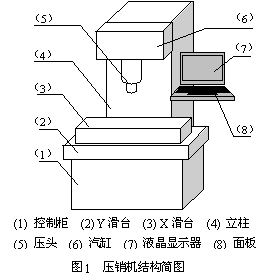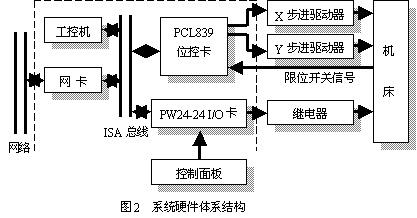Pressing is an indispensable process in the engine manufacturing process. Depending on the type of engine, the number of pin holes and the position distribution vary. The core of the traditional press machine is a lever mechanism. The working process is as follows: (1) clamping the engine blank on the workbench; (2) placing the preselected pin in the pin hole; (3) passing the rocker arm Turn the screw, move the table, and align the pin head with the pin; (4) Use the lever to push the pin into the pin hole. The process has two difficulties: the precise positioning of the first table, the axial deviation of the indenter and the pin hole must not exceed 30 μm; secondly, the pin-in depth of the pin is always 5 ± 0.5 mm from the upper end face of the pin hole. With the traditional pin presses, the degree of realization of these two indicators is closely related to the operator's operating experience and physical condition, and is a labor-intensive type of work.
In view of the labor intensity of the traditional press machine, and the frequent changes of product types by the production unit, we have developed the ATHD-030 CNC press machine when the processing volume is large and the supply cycle is short and it is difficult to match other processing steps.
2. The overall design of the press machine

Figure 1 shows the structure of the press machine. Considering the positioning accuracy, load condition and cost required by the control object, the stepping motor is directly connected to the ball screw as the open-loop drive unit of the worktable. The machine control core is an industrial PC and installed in the control cabinet (1). When working, the workpiece is mounted on the X slide table (3) and clamped with the matching fixture. The position of the workpiece on the plane relative to the axis of the indenter (5) is controlled by the X and Y slides. The cylinder is used to control the pressing and lifting of the indenter, and the Hall element is used to capture the position of the indenter at both ends of the indenter stroke.
With this design, the two difficult-to-control links in the pinning process are effectively controlled: first, the positional deviation between the axis of the indenter and the pin hole axis is controlled by the numerical control system and the ball wire. The transmission accuracy of the bar is guaranteed; secondly, the depth of the pin pressing into the pin hole can be ensured by adjusting the pressure of the cylinder and the holding time after pressing into place. Once the commissioning is passed, the precision of the machine tool is good, and human error is eliminated in these two key links, so that the quality of the workpiece can be effectively guaranteed.
3. CNC system hardware design

See Figure 2 for the hardware architecture of the CNC system. The industrial computer is the core control unit of the numerical control system. It is responsible for the scheduling management of the whole system, controlling the position control card and I/O card, thus realizing the position control and discrete logic control functions of the numerical control system. The host is equipped with a network card, which can be connected to other hosts through the LAN to implement DNC ​​group control or exchange data.
(1) Position control [1]
The Advantech PCL839 intelligent position control card is used to generate command pulses to control the position of the stepper motor. The card has the function of automatic trapezoidal acceleration and deceleration. The positive and negative limit switches of the machine axis and the zero switch signal are sent directly to the PCL839. The industrial control host realizes the monitoring function by directly reading and writing the register group of the PCL839 control card: the jump frequency, the highest frequency, and the acceleration of the output pulse can be set. These parameters determine the basic characteristics of the coordinate axis operation; the PCL839 can be commanded to generate Continuous operation, fixed length running pulse, control machine zero return action, etc.
The host calculates the position command, writes to the PCL839 command register, generates the command pulse, and sends it to the stepper motor driver to realize the position control of the machine tool.
(2) Logic control
The industrial control host cooperates with the PW24-24 photoelectric isolation input/output card to realize the built-in PLC to perform high-speed scanning on the input signal from the control panel. At the same time, the output signal is isolated and amplified, and the relay is directly driven to realize the discrete logic control function. [2].
Next page
Steel Shackle Padlock,Magnetic Padlock,Anti-Theft Padlock
Hi-Stay Trading Co., Ltd. , http://www.szprotection.com